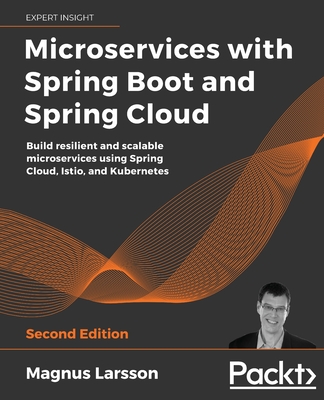A Practical Guide to Enterprise Architecture
暫譯: 企業架構實務指南
James McGovern, Scott W. Ambler, Michael E. Stevens, James Linn, Vikas Sharan, Elias K. Jo
- 出版商: Prentice Hall
- 出版日期: 2003-11-07
- 售價: $2,450
- 貴賓價: 9.5 折 $2,328
- 語言: 英文
- 頁數: 336
- 裝訂: Paperback
- ISBN: 0131412752
- ISBN-13: 9780131412750
-
相關分類:
企業資源規劃 Erp、軟體工程、軟體架構
立即出貨 (庫存 < 4)
買這商品的人也買了...
-
 Pattern-Oriented Software Architecture Volume 2: Patterns for Concurrent and Networked Objects (Hardcover)
Pattern-Oriented Software Architecture Volume 2: Patterns for Concurrent and Networked Objects (Hardcover)$3,370$3,202 -
 C++ Primer, 3/e 中文版
C++ Primer, 3/e 中文版$980$774 -
 UML 使用手冊 (The Unified Modeling Language User Guide)
UML 使用手冊 (The Unified Modeling Language User Guide)$580$452 -
 LPI Linux 資格檢定 (LPI Linux Certification in a Nutshell)
LPI Linux 資格檢定 (LPI Linux Certification in a Nutshell)$880$695 -
 ASP.NET 程式設計徹底研究
ASP.NET 程式設計徹底研究$590$466 -
 STRUTS 實作手冊(Struts in Action: Building Web Applications with the Leading Java Framework)
STRUTS 實作手冊(Struts in Action: Building Web Applications with the Leading Java Framework)$690$538 -
 Microsoft Windows Server 2003 系統實務
Microsoft Windows Server 2003 系統實務$780$616 -
 Crystal Reports 9 實戰演練
Crystal Reports 9 實戰演練$690$587 -
 Microsoft Windows Server 2003 架站實務
Microsoft Windows Server 2003 架站實務$580$458 -
 鳥哥的 Linux 私房菜-伺服器架設篇
鳥哥的 Linux 私房菜-伺服器架設篇$750$638 -
 詳解 JavaScript & HTML & CSS 語法辭典
詳解 JavaScript & HTML & CSS 語法辭典$490$382 -
 Tomcat 技術手冊 (Tomcat: The Definitive Guide)
Tomcat 技術手冊 (Tomcat: The Definitive Guide)$720$569 -
 Swing 實作手冊─Java GUI 最完整的參考 (Swing, 2/e)
Swing 實作手冊─Java GUI 最完整的參考 (Swing, 2/e)$750$585 -
 鳥哥的 Linux 私房菜─基礎學習篇增訂版
鳥哥的 Linux 私房菜─基礎學習篇增訂版$560$476 -
 $1,068Fundamentals of Database Systems, 4/e (IE)
$1,068Fundamentals of Database Systems, 4/e (IE) -
 JSP 動態網頁入門實務
JSP 動態網頁入門實務$720$569 -
 osCommerce 購物網站架設實戰
osCommerce 購物網站架設實戰$550$468 -
 Web 配色事典﹝活用網頁安全色﹞
Web 配色事典﹝活用網頁安全色﹞$390$304 -
 Dreamweaver MX 2004 魔法書中文版
Dreamweaver MX 2004 魔法書中文版$490$387 -
 軟體工程實務:系統分析、設計與測試 (Software Engineering in Practical)
軟體工程實務:系統分析、設計與測試 (Software Engineering in Practical)$420$328 -
 Linux 驅動程式 (Linux Device Drivers, 2/e)
Linux 驅動程式 (Linux Device Drivers, 2/e)$880$695 -
 SCJP‧SCJD 專業認證指南 (Sun Certified Programmer & Developer for Java 2 #310-305 與310-027)
SCJP‧SCJD 專業認證指南 (Sun Certified Programmer & Developer for Java 2 #310-305 與310-027)$850$723 -
 人月神話:軟體專案管理之道 (20 週年紀念版)(The Mythical Man-Month: Essays on Software Engineering, Anniversary Edition, 2/e)
人月神話:軟體專案管理之道 (20 週年紀念版)(The Mythical Man-Month: Essays on Software Engineering, Anniversary Edition, 2/e)$480$379 -
 JSP 2.0 技術手冊
JSP 2.0 技術手冊$750$593 -
 Enterprise SOA: Service-Oriented Architecture Best Practices
Enterprise SOA: Service-Oriented Architecture Best Practices$2,080$1,976
商品描述
Summary
In A Practical Guide to Enterprise Architecture, six leading experts present indispensable technical, process, and business insight into every aspect of enterprise architecture. You'll find start-to-finish guidance for architecting effective system, software, and service-oriented architectures; using product lines to streamline enterprise software design; leveraging powerful agile modeling techniques; extending the Unified Process to the full software lifecycle; architecting presentation tiers and user experience; and driving the technical direction of the entire enterprise. For every working architect and every IT professional who wants to become one.
Table of Contents
Acknowledgments.
Foreword.
Preface.
1. Systems Architecture.Canaxia Brings an Architect on Board. Network Protocols. Conclusion.
2. Software Architecture.
What Is Software Architecture? The Role of a Software Architect. Why We Need Software Architecture. The System Stakeholders. Creating a Software Architecture: An Example. Architecture Description Languages and UML. Quality Attributes. Architectural Viewpoints. Architectural Styles, Patterns, and Metaphors. Conclusion.
3. Service-Oriented Architecture.
Benefits of an SOA. Characteristics of an SOA. Web Services. Services at Canaxia. SOA Issues. SOA Management. SOA Best Practices. SOA Antipatterns. Conclusion.
4. Software Product Lines.
Product Lines at Canaxia. History of Product Lines. What Is a Software Product Line? Product Line Benefits. Product Line Aspects. Conclusion.
5. Methodology Overview.
The Software Development Life Cycle. Extreme Programming. SEI/CMM. The Zachman Framework. Model-Driven Architecture. Rational Unified Process. Using These Methodologies. Conclusion.
6. Enterprise Unified Process.
The Enterprise-Unified Process. The Production Phase. The Retirement Phase. The Operations and Support Discipline. The Enterprise Management Discipline. Why Adopt the EUP? Conclusion.
7. Agile Architecture.
Agility in a Nutshell. Potential Problems with Traditional Approaches to Enterprise Architecture. An Agile Approach to Architecture. What Should Agile Architecture Efforts Produce? Agile Architecture at Canaxia. Introducing an Agile Approach into Your Organization. Are Other Architecture Approaches Agile? Potential Problems with an Agile Approach. Conclusion.
8. Agile Modeling.
The Goals of Agile Modeling. Agile Models. Agile Documents. Conclusion.
9. Presentation Tier Architecture.
Key Presentation Tier Components. General Design Recommendations. Design Guidelines for Interface Components. Conclusion.
10. Usability and User Experience.
Understanding Usability. User Experience Components. Usability and User Experience Design Process. Usability Techniques. Sharing the Usability Test Reports. Out-of-the-Box Experience. Conclusion.
11. Data Architecture.
The Business Problem. Baseline Data Architecture. Frameworks. Metadata. Advanced Metadata Architecture. Data Security. Agile Database Techniques. Conclusion.
12. Thought Leadership.
Organizational Matrix. Outsourcing and Core Competencies. Strong Technical Leadership. Architects Stand the Test of Time. The Savage Pursuit of Best Practices. The Agile CIO. The Mysteries of Open Source. Consultant 101. Why I Should Be a CIO. The Next Minute. Conclusion.
Appendix A.
Appendix B.
Appendix C.
Appendix D.
Appendix E.
Appendix F.
Appendix G.
About the Authors.
Index.
商品描述(中文翻譯)
**摘要**
在《企業架構實用指南》中,六位領先專家提供了企業架構各個方面不可或缺的技術、流程和商業見解。您將找到從頭到尾的指導,幫助您設計有效的系統、軟體和服務導向架構;利用產品線來簡化企業軟體設計;運用強大的敏捷建模技術;將統一流程擴展到整個軟體生命週期;設計展示層和用戶體驗;以及推動整個企業的技術方向。這本書適合每位在職架構師和每位希望成為架構師的IT專業人士。
**目錄**
致謝。
前言。
序言。
1. 系統架構。
Canaxia 聘請架構師。網路協議。結論。
2. 軟體架構。
什麼是軟體架構?軟體架構師的角色。我們為什麼需要軟體架構。系統利益相關者。創建軟體架構:一個範例。架構描述語言和UML。質量屬性。架構觀點。架構風格、模式和隱喻。結論。
3. 服務導向架構。
SOA的好處。SOA的特徵。網路服務。Canaxia的服務。SOA問題。SOA管理。SOA最佳實踐。SOA反模式。結論。
4. 軟體產品線。
Canaxia的產品線。產品線的歷史。什麼是軟體產品線?產品線的好處。產品線的各個方面。結論。
5. 方法論概述。
軟體開發生命週期。極限編程。SEI/CMM。Zachman框架。模型驅動架構。理性統一流程。使用這些方法論。結論。
6. 企業統一流程。
企業統一流程。生產階段。退役階段。運營和支持學科。企業管理學科。為什麼要採用EUP?結論。
7. 敏捷架構。
敏捷的概念。傳統企業架構方法的潛在問題。敏捷架構的方法。敏捷架構的努力應該產出什麼?Canaxia的敏捷架構。將敏捷方法引入您的組織。其他架構方法也是敏捷的嗎?敏捷方法的潛在問題。結論。
8. 敏捷建模。
敏捷建模的目標。敏捷模型。敏捷文件。結論。
9. 展示層架構。
關鍵展示層組件。一般設計建議。介面組件的設計指導。結論。
10. 可用性和用戶體驗。
理解可用性。用戶體驗組件。可用性和用戶體驗設計過程。可用性技術。分享可用性測試報告。開箱即用的體驗。結論。
11. 數據架構。
商業問題。基線數據架構。框架。元數據。進階元數據架構。數據安全。敏捷數據庫技術。結論。
12. 思想領導。
組織矩陣。外包與核心競爭力。強大的技術領導。架構師經得起時間的考驗。對最佳實踐的狂熱追求。敏捷CIO。開源的奧秘。顧問101。我為什麼應該成為CIO。下一分鐘。結論。
附錄A。
附錄B。
附錄C。
附錄D。
附錄E。
附錄F。
附錄G。
關於作者。
索引。

















